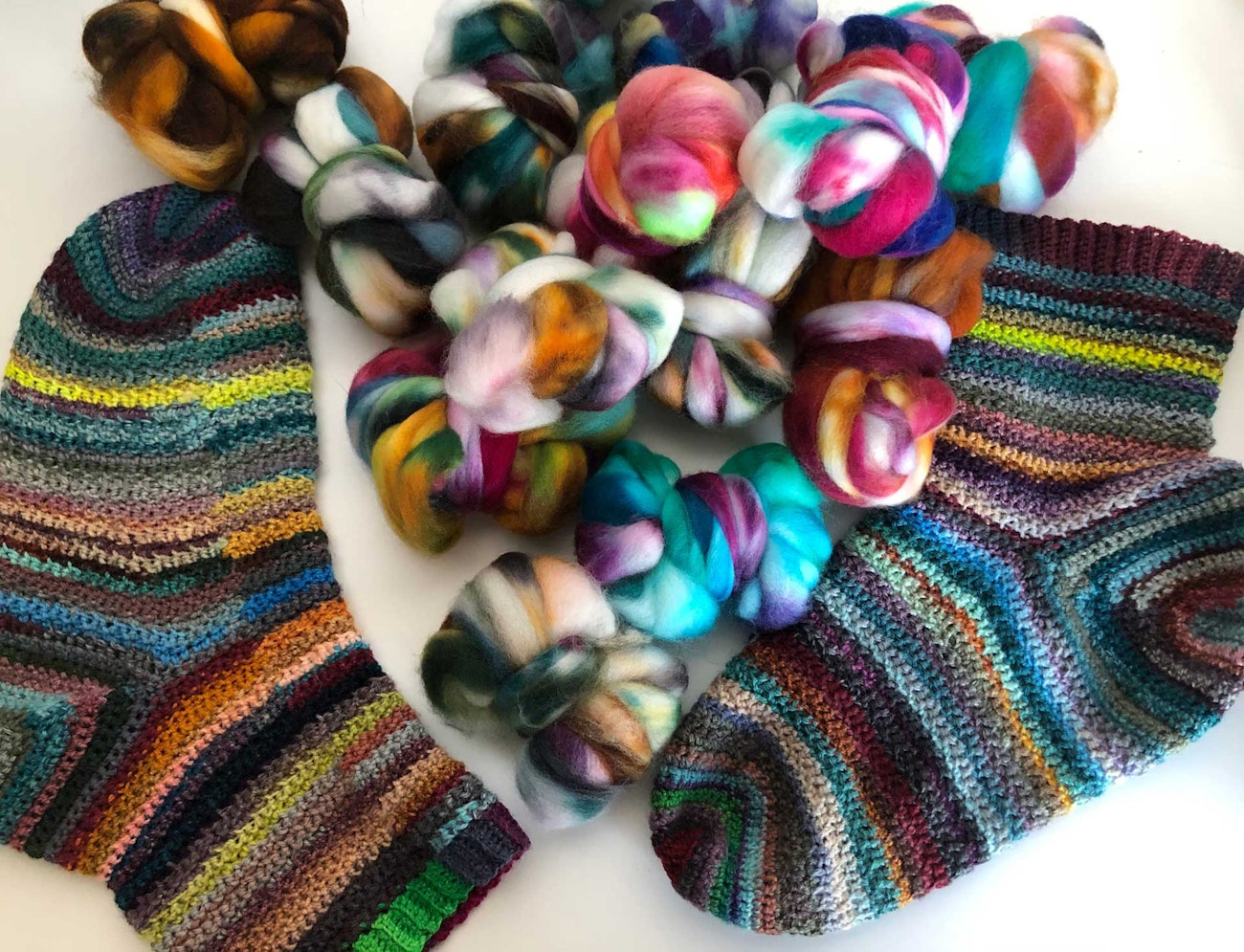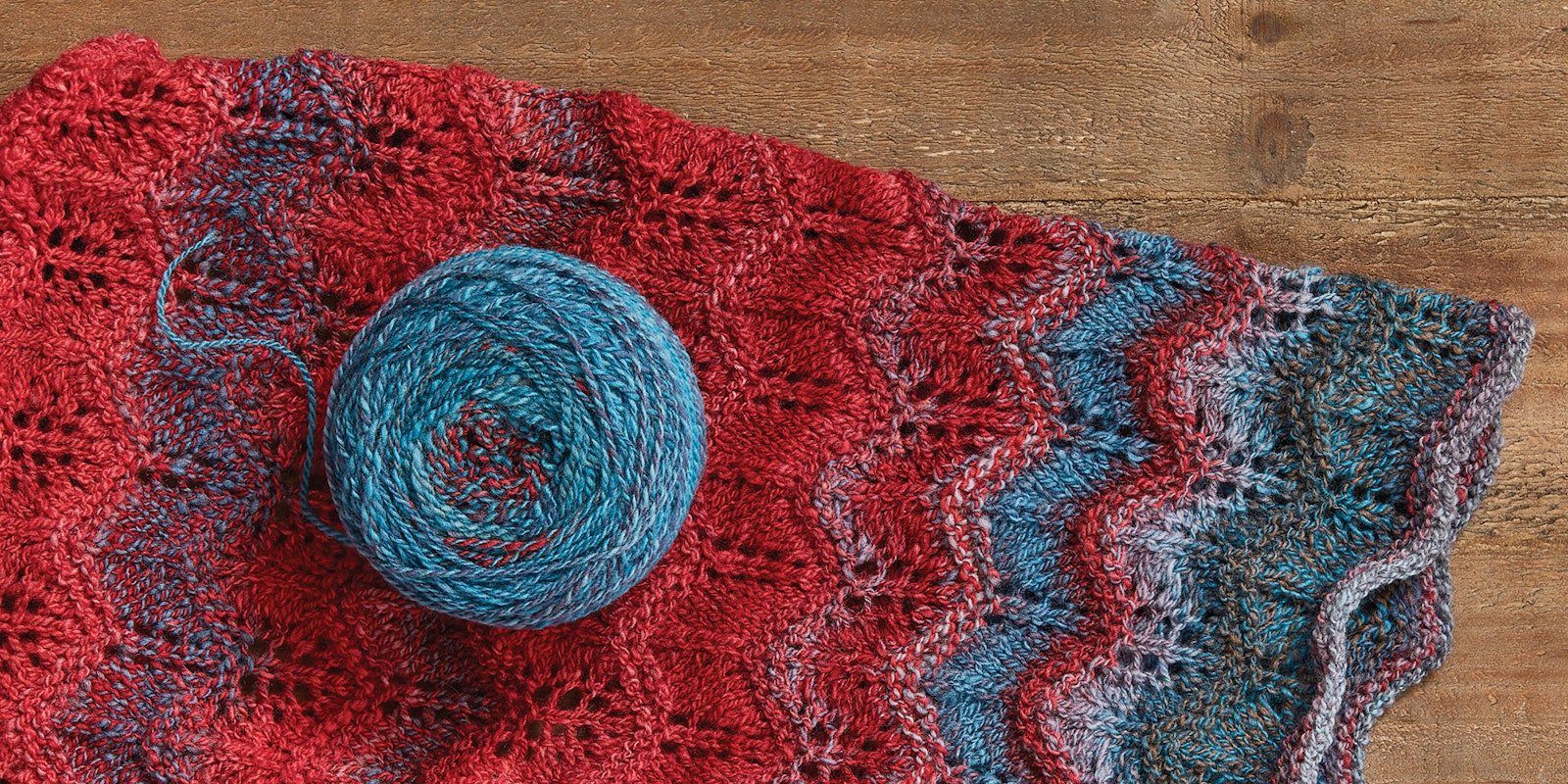So you finally took the plunge and spun up a sweater’s worth of that colorful handpainted fiber or gorgeous natural fleece. Now you want to know how to make your handspun work in a particular pattern.
Exactly matching the grist and weight of a commercial yarn is nigh impossible, so using patterns written for a specific yarn can cause some challenges. You could write your own pattern from scratch, but why reinvent the wheel?
 Renee Strouts used handspun in her Scrappy Crochet Socks. Photo courtesy of Renee Strouts
Renee Strouts used handspun in her Scrappy Crochet Socks. Photo courtesy of Renee Strouts
Love That Math!
The first step for any project is a gauge swatch. Find your stitch and row gauge, then calculate the number of stitches at the new gauge for each measurement on the project’s schematic (if one is given). The most thorough approach is to calculate the number of stitches needed using your gauge. It can take some time to calculate each individual measurement, but it’s a very accurate way to reconfigure a pattern.
For an easier but slightly less accurate shortcut, you can find the ratio between your actual gauge and the pattern gauge, then use that to figure out which pattern size will give you the desired measurement.
There are a few caveats with this approach: First, this method doesn’t take row gauge into account, so be sure to use the row measurements from your original size. Second, it really works best for small differences in gauge and for patterns with a fairly wide range of sizes.
 A difference of just one stitch can make a big difference, but you can straighten it out with basic math. The cashmere cabled yarn knitted at a gauge of 31 stitches and 44 rows per 4 inches. Using the same size 2 needles, this handspun singles yarn knits up at 27 stitches and 36 rows per 4 inches.
A difference of just one stitch can make a big difference, but you can straighten it out with basic math. The cashmere cabled yarn knitted at a gauge of 31 stitches and 44 rows per 4 inches. Using the same size 2 needles, this handspun singles yarn knits up at 27 stitches and 36 rows per 4 inches.
Got Enough Yarn?
If you’re planning to spin for a specific project, be sure to have at least as many ounces of fiber as the pattern calls for, and if your finished yarn is bulkier than the pattern calls for, get extra. Always get enough fiber to sample! If the called-for yarn is woolen-spun and you’re planning to spin worsted, the finished project will be heavier. Also keep in mind that not all fibers are created equal; if you substitute a denser fiber such as silk for a fluffier fiber such as wool, you’ll need more fiber as well.
Further Resources
- Read Kate Larson's “Tips for Knitting with Handspun Yarns.”
- Need ideas of what to knit using your handspun? Read “4 Knitting Patterns Perfect for Your Handspun Yarn.”
- Looking for a fun crochet pattern? See “Tunisian Crochet: Spin a Cozy Case for Your Tablet or Laptop.”
- For even more patterns, check out 7 Handspun Shawls to Knit, Crochet, and Weave eBook in the Spin Off Library.
Laura Hulslander is a former project editor for Long Thread's knitting patterns.
This article was adapted from “Knit Anything with Handspun;” read the full article in Spin Off Fall 2017. Originally published January 19, 2018; updated January 27, 2025.

